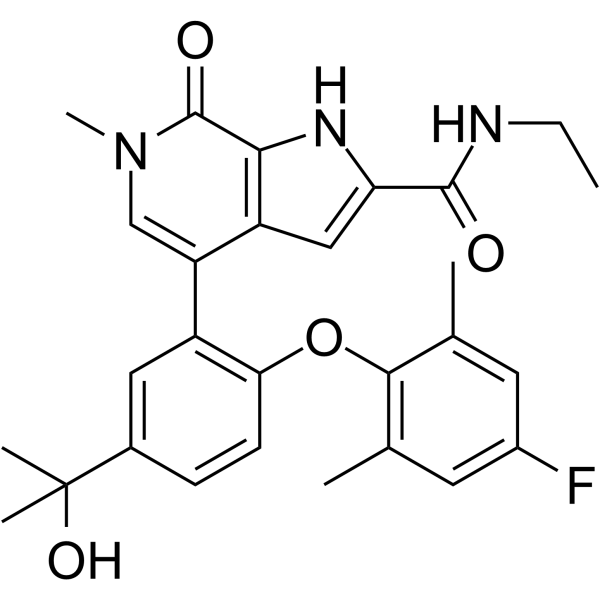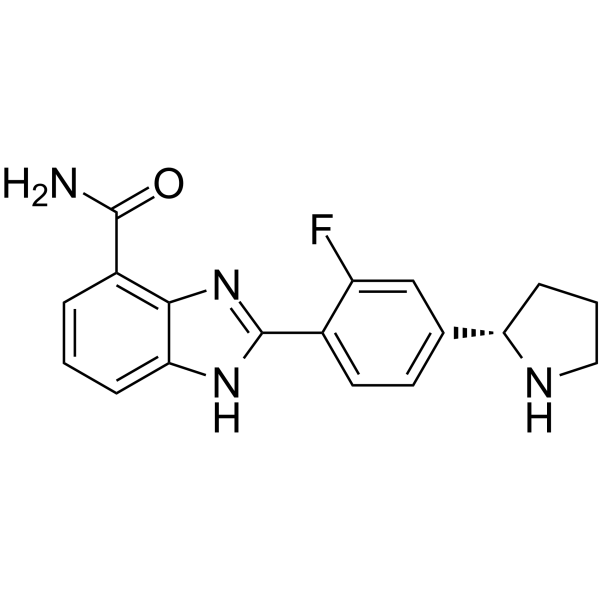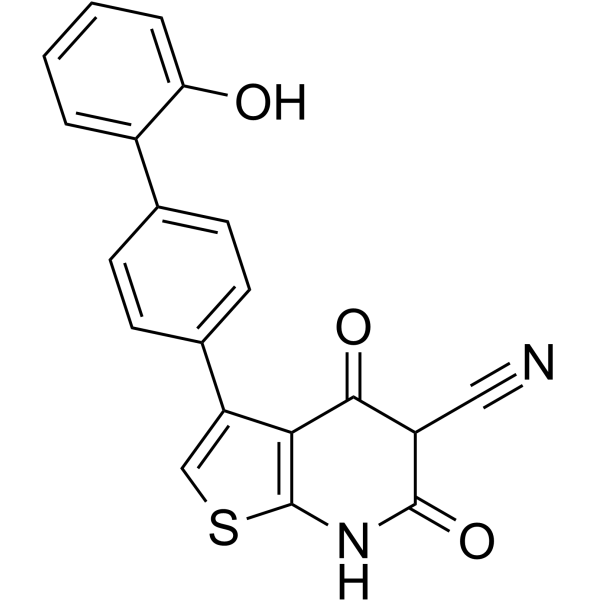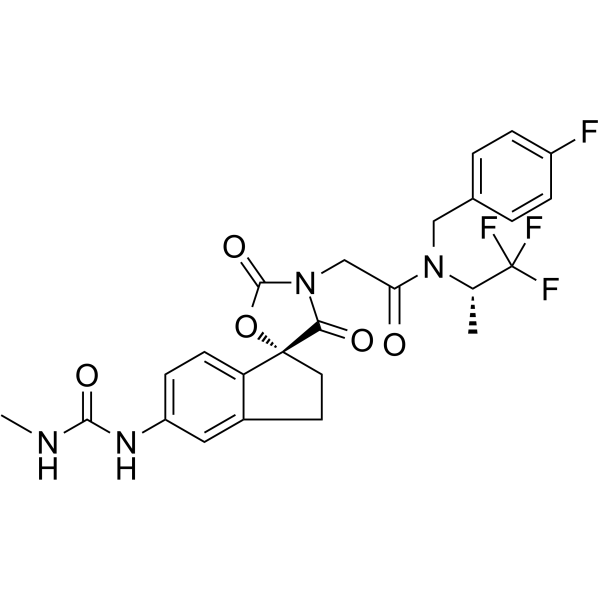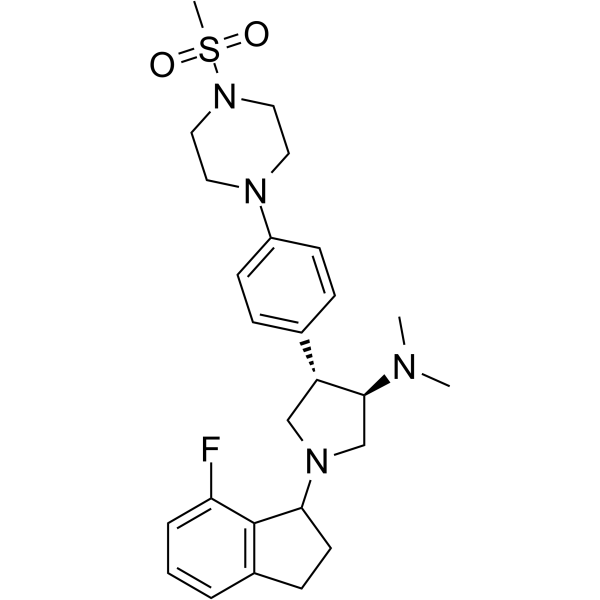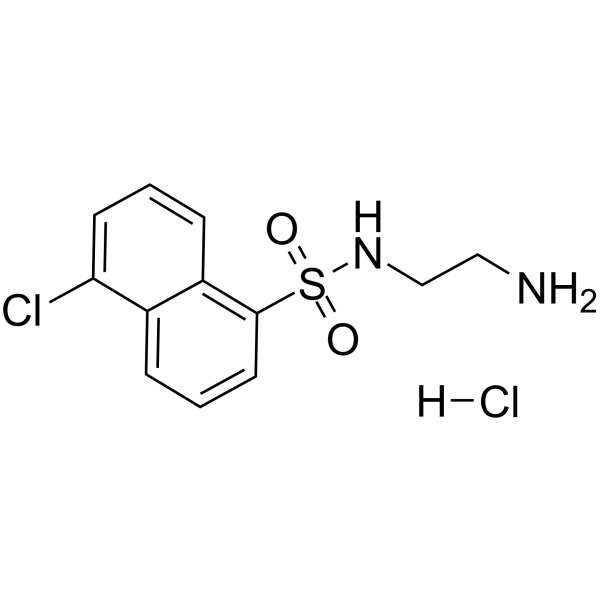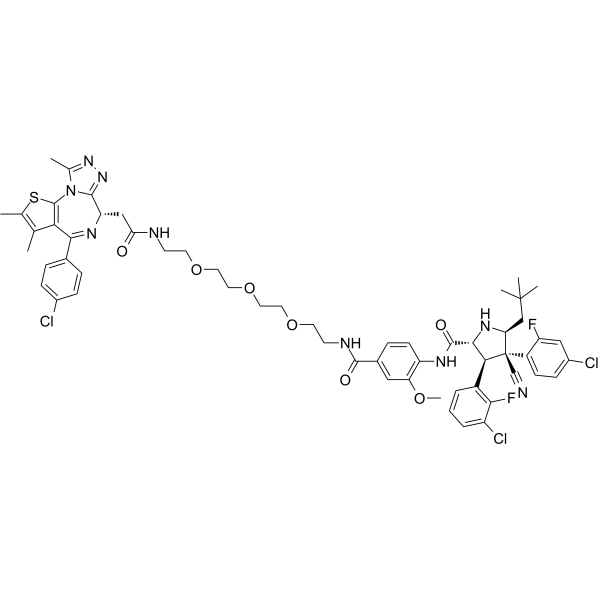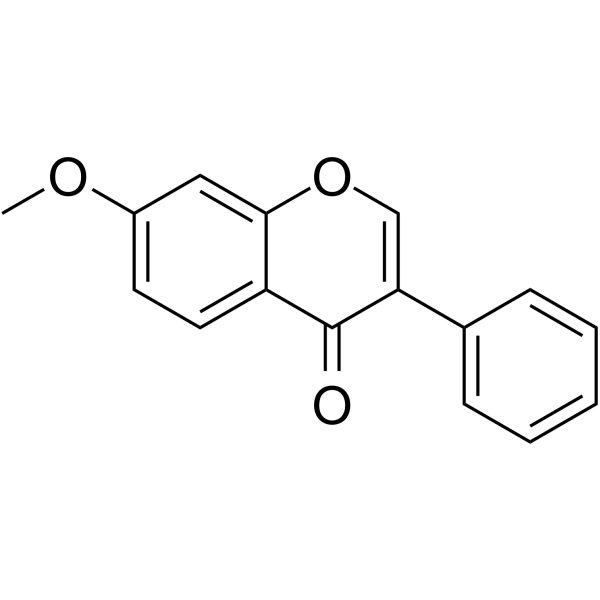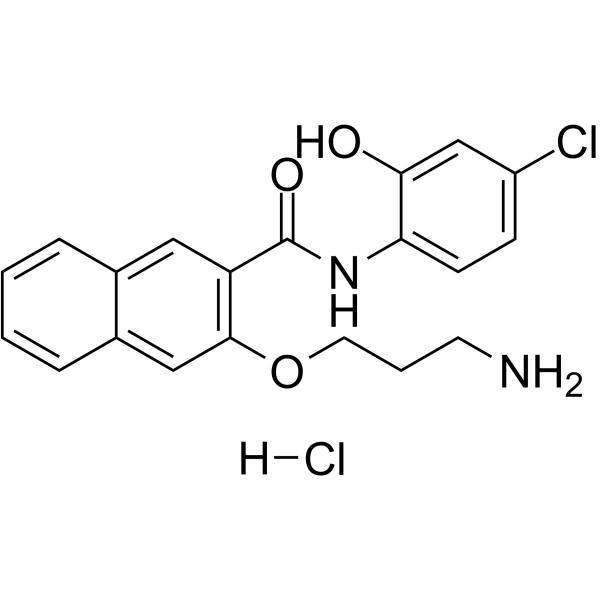|
BP13659
|
Acetyl Pentapeptide-1 acetate
|
|
|
|
|
Acetyl Pentapeptide-1 acetate is an histone deacetylase inhibitor.
|
|
BP13658
|
ABBV-744
|
|
|
|
|
ABBV-744 is a BDII-selective BET bromodomain inhibitor that inhibits BRD2/3/4. It is used in the research on inflammatory diseases, cancer, and AIDS.
|
|
BP13657
|
A-966492
|
|
|
|
|
A-96649 is a new-type and effective inhibitor. The Ki of A-966492 for PARP1 and PARP2 is 1 nM and 1.5 nM, respectively.
|
|
BP13656
|
A-769662
|
|
|
|
|
A-769662 is an effective, reversible AMPK activator(EC50=0.8 μM).
|
|
BP13655
|
A-485
|
|
|
|
|
A-485 is a potent and selective catalytic p300/CBP inhibitor(IC50s of 9.8 nM and 2.6 nM for p300 and CBP, respectively).
|
|
BP13654
|
A-395
|
|
|
|
|
A-395 is an antagonist of polycomb repressive complex 2 (PRC2) protein-protein interactions that potently inhibits the trimeric PRC2 complex (EZH2-EED-SUZ12, IC50: 18 nM).
|
|
BP13653
|
A-3 hydrochloride
|
|
|
|
|
A-3 hydrochloride is a potent, cell-permeable, reversible, ATP-competitive non-selective antagonist of various kinases. A-3 hydrochloride also inhibits PKC and casein kinase I with Ki values of 47 μM and 80 μM, respectively. A-3 hydrochloride against PKA (Ki=4.3 μM), casein kinase II (Ki=5.1 μM) and myosin light chain kinase (MLCK) (Ki=7.4 μM).
|
|
BP13652
|
A1874
|
|
|
|
|
A1874 is a nutlin-based and BRD4-degrading PROTAC which induces BRD4 degradation in cells. Effective in inhibiting many cancer cell lines proliferation.
|
|
BP13651
|
8-Chloroadenosine
|
|
|
|
|
8-Chloroadenosine is a 5' AMP-activated protein kinase agonist potentially for the treatment of chronic lymphocytic leukemia. 8-chloroadenosine activity is associated with inhibition of the mTOR pathway.8-Chloroadenosine is a nucleoside analog; metabolized in vivo to 8-Chloro-ATP. Incorporates into RNA during transcription and inhibits RNA synthesis. Exhibits cytotoxicity in MM.1S, RPMI-8226, and U266 cancer cell lines; induces G2/M cell cycle arrest and mitotic catastrophe in A549 and H1299 cells. 8-Chloroadenosine has been shown to deplete ATP and inhibit tumor growth in hematological malignancies as well as in lung and breast cancer cell lines.
|
|
BP13650
|
7-Methoxyisoflavone
|
|
|
|
|
7-Methoxyisoflavone is an activator of adenosine monophosphate-activated protein kinase (AMPK).
|
|
BP13649
|
6-Deoxyisojacareubin
|
|
|
|
|
6-Deoxyisojacareubin shows moderate inhibitory activity against the QGY-7703 cell line, with the IC50 value of 9.65 uM; it also possesses potency in the inhibition of protein kinase C (PKC).
|
|
BP13648
|
666-15
|
|
|
|
|
666-15 is a potent and selective CREB inhibitor (IC50: 81 nM).
|
|
BP13647
|
653-47 hydrochloride
|
|
|
|
|
653-47 hydrochloride is a potentiator, significantly potentiates the cAMP-response element binding protein (CREB) inhibitory activity of 666-15. It is also a very weak CREB inhibitor with IC50 of 26.3 μM.
|
|
BP13646
|
5-Feruloylquinic acid
|
|
|
|
|
5-O-Feruloylquinic acid is a potent Sirt1 agonist, it is a potential lead compound that can be further tested in drug development process for diseases associated with aging.
|
|
BP13645
|
5-Methyl-2'-deoxycytidine
|
|
|
|
|
5-Methyl-2'-deoxycytidine is a pyrimidine nucleoside that when incorporated into single-stranded DNA can act in cis to signal de novo.
|
|
BP13644
|
5-amino-1,2-dihydroisoquinolin-1-one
|
|
|
|
|
5-aminoisoquinolin-1(2H)-one is the inhibitor of calf thymus PARP1.
|
|
BP13643
|
4'-Methoxychalcone
|
|
|
|
|
4'-Methoxychalcone with a variety of pharmacological activities, such as anti-tumor and anti-inflammatory activities.
|
|
BP13642
|
4'-bromo-Resveratrol
|
|
|
|
|
4'-bromo-Resveratrolis a potent inhibitor of the deacetylases sirtuin 1 (SIRT1) and 3 (SIRT3)
|
|
BP13641
|
4beta-Hydroxywithanolide E
|
|
|
|
|
4beta-Hydroxywithanolide E(4bHWE) can inhibit the growth of colon cancer monolayer and spheroid cultures, it assert its anti-tumor activity in carcinogenic progression and develop into a dietary chemopreventive agent, it affects alternative splicing by modulating splicing factors and histone modifications.4bHWE is a useful natural anti-inflammatory compound to attenuate progression of diabetes and obesity, it decreases inflammatory responses by inhibiting the NF-κB signaling in diabetic mouse adipose tissue, it also can improve impaired glucose tolerance.
|
|
BP13640
|
4-amino-1,8-Naphthalimide
|
|
|
|
|
4-amino-1,8-Naphthalimide (4-ANI) is a PARP inhibitor with IC50 of 180 nM
|

